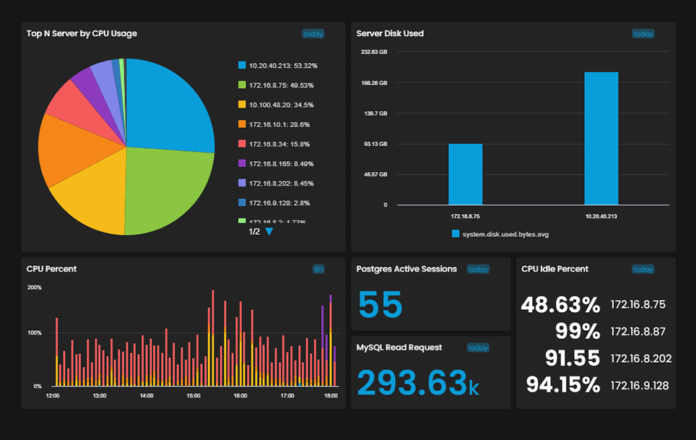In an era marked by stringent regulatory requirements and increasing data privacy concerns, organizations across industries are facing mounting pressure to ensure compliance with a myriad of regulations and standards. From GDPR and HIPAA to PCI DSS and CCPA, regulatory compliance has become a top priority for organizations seeking to protect sensitive data, mitigate security risks, and avoid costly fines and reputational damage. In this landscape, next-generation network monitoring emerges as a crucial tool for streamlining compliance efforts and maintaining regulatory adherence in an ever-evolving threat landscape.
Deeper Insight through Next-Generation Network Monitoring
Next-generation network monitoring goes beyond traditional methods of network monitoring by providing organizations with deeper visibility into their network infrastructure, application performance, and user activities. By leveraging advanced analytics, machine learning, and automation capabilities, next-generation network monitoring solutions enable organizations to detect, analyze, and respond to security threats and compliance violations in real-time, ensuring continuous compliance with regulatory requirements.
Packet Filtering: Fortifying Compliance Measures
Packet filtering mechanisms is a fundamental component of next-generation network monitoring. Packet filtering involves inspecting individual data packets as they traverse the network and making decisions about whether to allow, block, or redirect them based on predefined criteria. By selectively filtering out irrelevant or unauthorized traffic, organizations can reduce the attack surface, minimize security risks, and ensure compliance with regulatory mandates. Packet filtering enables organizations to implement access controls, enforce security policies, and mitigate various types of network-based threats, including malware propagation, DDoS attacks, and data exfiltration attempts.
Comprehensive Monitoring: A Multi-Faceted Approach
However, next-generation network monitoring goes beyond packet filtering alone. To achieve comprehensive compliance and security, organizations must adopt a multi-faceted approach to network monitoring that encompasses a wide range of capabilities, including deep packet inspection (DPI), behavioral analysis, anomaly detection, and threat intelligence integration.
Deep Packet Inspection (DPI): Unveiling Granular Insights
Deep packet inspection (DPI) enables organizations to inspect the contents of data packets at a granular level, including application payloads and protocol headers. By analyzing the actual data payload, DPI enables organizations to classify and prioritize network traffic based on application types, user activities, and content categories, allowing for more sophisticated filtering and traffic prioritization strategies. DPI also plays a crucial role in compliance efforts by enabling organizations to monitor and enforce policies related to data privacy, content filtering, and acceptable use.
Behavioral Analysis: Identifying Deviations
Behavioral analysis focuses on identifying deviations from normal behavior within the network. By establishing baseline behavior patterns through continuous monitoring and statistical analysis, behavioral analysis techniques can detect abnormal activities indicative of potential security threats or compliance violations, such as unusual traffic patterns, unauthorized access attempts, and anomalous user behavior. Behavioral analysis enables organizations to detect insider threats, compromised accounts, and unauthorized access attempts, allowing them to take proactive measures to mitigate security risks and ensure compliance with regulatory requirements.
Anomaly Detection: Detecting Emerging Threats
Anomaly detection complements behavioral analysis by focusing on identifying deviations from expected patterns of behavior within the network. By analyzing network traffic, system logs, and user activities in real-time, anomaly detection techniques can identify and flag suspicious activities or events that may indicate security breaches or compliance violations. Anomaly detection enables organizations to detect previously unseen threats and zero-day attacks that may evade traditional security measures, providing an additional layer of defense against emerging threats.
Integration of Threat Intelligence: Strengthening Security Posture
Furthermore, next-generation network monitoring solutions integrate threat intelligence feeds, such as feeds from commercial providers, open-source sources, and industry collaborations, to enrich their security analytics with contextual information about known threats and emerging risks. By correlating network traffic data with threat intelligence feeds, organizations can prioritize security alerts, identify high-risk threats, and respond proactively to security incidents. Threat intelligence integration enables organizations to stay ahead of cyber adversaries, adapt to evolving threats, and maintain compliance with regulatory requirements.
Driving Operational Efficiency and Business Agility
In addition to enhancing security and compliance efforts, next-generation network monitoring solutions also offer organizations valuable insights into their network performance, resource utilization, and user behavior. By analyzing network traffic, application performance metrics, and user activities, organizations can identify bottlenecks, optimize resource allocation, and improve the overall efficiency and reliability of their network infrastructure. These insights enable organizations to make informed decisions about capacity planning, infrastructure upgrades, and network optimization, ultimately driving business agility and competitiveness.
Centralized Visibility and Control
Moreover, next-generation network monitoring solutions provide organizations with centralized visibility and control over their entire network infrastructure, including on-premises, cloud-based, and hybrid environments. By consolidating network monitoring tools and data sources into a single platform, organizations can simplify management, reduce complexity, and improve operational efficiency. Centralized visibility enables organizations to monitor and manage their network infrastructure from a unified console, ensuring consistent enforcement of security policies and compliance measures across the entire network.
Conclusion
In today’s regulatory landscape, compliance with industry standards and government regulations is a critical priority for organizations across all sectors. From healthcare to finance to retail, organizations must adhere to a myriad of regulations such as HIPAA, PCI DSS, GDPR, and Sarbanes-Oxley Act to ensure the security and privacy of sensitive data and maintain trust with customers and stakeholders. Achieving and maintaining compliance can be a daunting task, requiring organizations to implement robust monitoring and reporting mechanisms to demonstrate adherence to regulatory requirements.
Next-generation network monitoring solutions offer organizations a powerful tool for streamlining compliance and software efforts and ensuring adherence to regulatory mandates. By leveraging advanced monitoring capabilities, organizations can gain comprehensive visibility into their network infrastructure, monitor data flows in real-time, and detect security incidents and compliance violations proactively. Next-generation network monitoring solutions enable organizations to collect, analyze, and report on a wide range of network data, including traffic patterns, user activities, and security events, providing valuable insights into their compliance posture and security posture.














